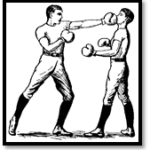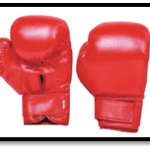Textiles for High Risk Sports
Mayur Basuk & Amit Sengupta
Scientists, Wool Research Association, Thane, Maharashtra, India
(Linked to Ministry of Textiles, Govt. of India)
Abstract
Textiles used in the high risk games play a major role as they perform three major functions. First, they are used as impact protective clothing to absorb the energy of the impact event so that the body segment being protected is either not damaged or, if damaged, the level of damage is acceptable. Secondly, they are used to perform that particular game and finally textile materials provide comfort to the wearer. A high risk textile used in various sport supports & helps the athletes to better performance. The aim of this paper is to give an overview on the textiles which are involved in the high risk games such as boxing, fencing, Judo, wrestling etc.
Keywords: Sport Textiles, Classifications, High risk games
- Introduction:
Worldwide there is an increased interest in the nontraditional sports activities like high risk games & adventure sports particularly among the ladies and youths. Among the Indians, high risk games & adventure sports activities are still at a nascent stage, but the country is a hub for adventure sports for tourists. With the increase in living standard and change in life style, the high risk games & adventure sports will grow in India. In addition, the manufacturing activities of textiles for sports including high risk games & adventure sports are shifting from the developed countries to the developing countries. The Indian entrepreneurs can capitalize this opportunity to business. Textile materials are used in all sports including high risk games & adventure sports. There are no sports without textiles. In recent years, international sports and activity wear market has become extremely dynamic. The UK market for sportswear has grown to more than US 7.8 billion in 2012 and will grow further in future. For 2014 the world sports clothing and footwear market is expected to reach a total size of almost US 17.0 billion of which Western Europe is likely to represent 20%, North America 22%, Japan and South Korea 12% while rest of the world would be 40%. In addition, there is additional demand of about US 20 billion for luggage components, camping equipment, sports equipment etc. To understand the scale of development of textiles in sports, one must appreciate the tremendous development of sport itself. A few decades back, sport textiles was limited and there were few like sking gloves, specialized foot wear and very limited protective coverings for knees and elbows. There were no special insert pads for shorts, no gel moulding saddles, no elastane riding shorts to reduce muscle fatigue.
Textile materials are used in all sports as sportswear, as sports equipment and sports footwear. The strong rise in participation in professional and outdoor sport has also been an important factor responsible for the development trends in consumption of textiles in sport. Now a day, the discrepancy of performance among competitive athletes is getting smaller and smaller. Therefore wearing high tech textile could help to get advantage over competitors [6, 7].
Sportech falls in one of the twelve categories of technical textiles. Further, Sport textiles can be categorized as follows:
(I) Sports Wear – Apparels or Special Clothing systems for comfort, compatibility and performance of the sports person by improved functional characteristics like moisture management, soil guard, electrometric, antimicrobial properties, ease of use, etc.
(II) Sports Goods & equipments– These are the active sport Items for specific sport like inflatable balls for volley ball, football and rugby, hockey sticks, golf club, etc.
(III) Sports Accessories – Efficient and durable sporting items providing designated playing conditions for the targeted sports, viz. Artificial turfs, rings, etc.
Textiles used in the high risk games provide protection to the wearer by absorbing the energy of the impact as well as they are used to perform that particular game with comfort property.
- Various high risk games:
There are following games mentioned below which can be categorized as high risk: Boxing, Fencing, Judo, Wrestling, Taekwondo, Weight lifting, Hot air Ballooning, Ropes for paragliding & mountaineering.
2.1 Boxing: Boxing is a combat sport in which two people engage in a contest of strength, speed, reflexes, endurance, and will, by throwing punches with gloved hands against each other. There are three main styles in boxing: out-fighter (“boxer”), brawler (or “slugger”), and In-fighter (“swarmer”). These styles may be divided into several special subgroups, such as counter puncher, etc. The main philosophy of the styles is, that each style has an advantage over one, but disadvantage over the other one.
2.1.1 Boxing Equipments: Boxing equipments consist of Boxing Gloves, Boxing Punching Gloves, Boxing Head Guards, Boxing Punching Pads, Abdominal Guard, Speed Ball, Punching Bag etc.
Boxing equipments are made of PU laminated / PVC coated fabrics, woven polyester fabric/ Nylon fabric. PU/PVC coated fabrics are the most commonly used fabrics.
- Boxing gloves: Boxing gloves are cushioned gloves that fighters wear on their hands during boxing matches. The term also refers to gloves used in training, though these often differ from competition gloves. Modern boxing gloves were developed to protect the hands of the striker during a boxing match though specialized gloves are now available for competitions, sparring practice and other types of training. The use of modern boxing gloves typically results in fewer superficial facial injuries but does not reduce the risk of brain damage for participants, and may even increase it because of the ability to throw stronger punches to the head without hurting the hands.
Modern boxing gloves started showing up towards end of the 90’s. Over ten years of engineering and testing by some of the biggest boxing manufacturers and sport names have helped create safe, durable and long lasting equipment. Modern boxing gloves include breathable mesh palm technology with Velcro and 100% complete leather backed stitching, with some also including suspension cushioning and re-enforced padding for the boxer. The UK use AIBA to approve the new design of gloves including the 12oz and 14oz and 16oz weight categories to coincide with the amount of leather and support boxers can use in fights.
Gloves used in amateur boxing are frequently red or blue, with a white “scoring area” to help judges more easily see and record points. Common weights for gloves in the United States are sixteen, twelve and eight ounces.
Manufacturing of boxing gloves in India is done mostly by small scale industries. These industries are labour intensive and are generally clustered together. The key clusters for manufacturing of gloves are located at Meerut. Meerut excelling in the Cricket and boxing sports goods industry.
Table 1: Materials for the Manufacture of Boxing Gloves [8]





